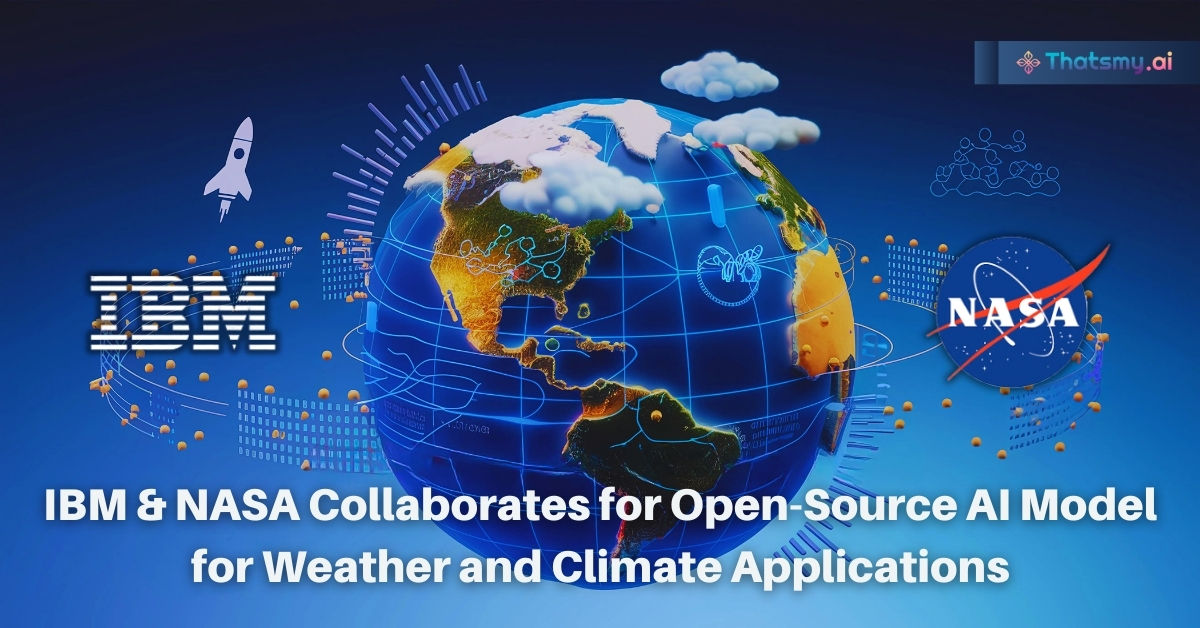IBM and NASA have released an open-source AI model that provides advanced insights into weather and climate patterns. The model can be fine-tuned for short-term weather forecasts and long-term climate projections, making it highly versatile. It offers applications in high-resolution forecasting and gravity wave analysis, enhancing the accuracy of weather predictions. Available on the Hugging Face platform, this AI model aims to help scientists, developers, and organizations make more informed decisions about weather and climate challenges.

IBM and NASA have teamed up to launch an open-source AI model designed to tackle weather and climate challenges. This model, available on the AI platform Hugging Face, aims to help scientists, developers, and businesses understand and analyze weather and climate data more accurately.
Built with 40 years of Earth observation data, this AI model is expected to significantly improve weather forecasting and climate projections, offering insights that go beyond traditional methods.
This AI model stands out because of its versatility and adaptability. It can be fine-tuned for both short-term weather forecasts and long-term climate projections. The model is capable of handling data at different scales – global, regional, and local – making it suitable for various weather studies.
This flexibility allows the model to be used in numerous applications, such as predicting severe weather patterns, improving the accuracy of climate simulations, and even creating localized forecasts.
The AI model has two specialized versions that tackle specific scientific and industry challenges:
Climate and Weather Data Downscaling: This feature allows the model to generate high-resolution forecasts and projections based on low-resolution data inputs. It can depict weather and climate data at up to 12 times the original resolution, making predictions more precise. This is particularly useful for understanding local weather patterns and climate changes.
Gravity Wave Parameterization: Gravity waves play a significant role in climate and weather processes, but traditional models often fail to capture them accurately. This AI model helps in estimating gravity wave generation, improving the accuracy of weather and climate simulations, and reducing uncertainties when predicting future events.
The development of this model was a collaborative effort between IBM, NASA, and Oak Ridge National Laboratory. It aligns with NASA's mission to provide actionable climate and weather data that can help communities and organizations make informed decisions.
The model aims to help scientists and meteorologists understand phenomena like hurricanes and atmospheric rivers better, providing more accurate projections for severe weather events.
The AI model has already been tested in collaboration with Environment and Climate Change Canada (ECCC) for short-term precipitation forecasts using real-time radar data. It has also proven effective in downscaling weather forecasts to a finer resolution, enhancing the precision of predictions.
This model forms part of a larger effort by IBM and NASA to use AI technology to gain a deeper understanding of Earth’s climate.
The AI model and its fine-tuned versions are available for download on Hugging Face, an open-source platform for machine learning. Researchers, developers, and organizations can access the model to analyze weather patterns, climate risks, and more.
The model's flexibility means it can be used across various industries, making it a valuable tool for anyone working in weather or climate-related fields.
IBM and NASA’s open-source AI model marks a significant step forward in weather and climate research. Its ability to adapt to different scales and provide high-resolution data makes it a powerful tool for scientists, developers, and businesses. By offering more accurate weather forecasts and climate projections, this model has the potential to transform how we understand and respond to climate challenges.
Sign up to gain AI-driven insights and tools that set you apart from the crowd. Become the leader you’re meant to be.
Start My AI Journey
ThatsMyAI
20 March 2025

ThatsMyAI
7 March 2025